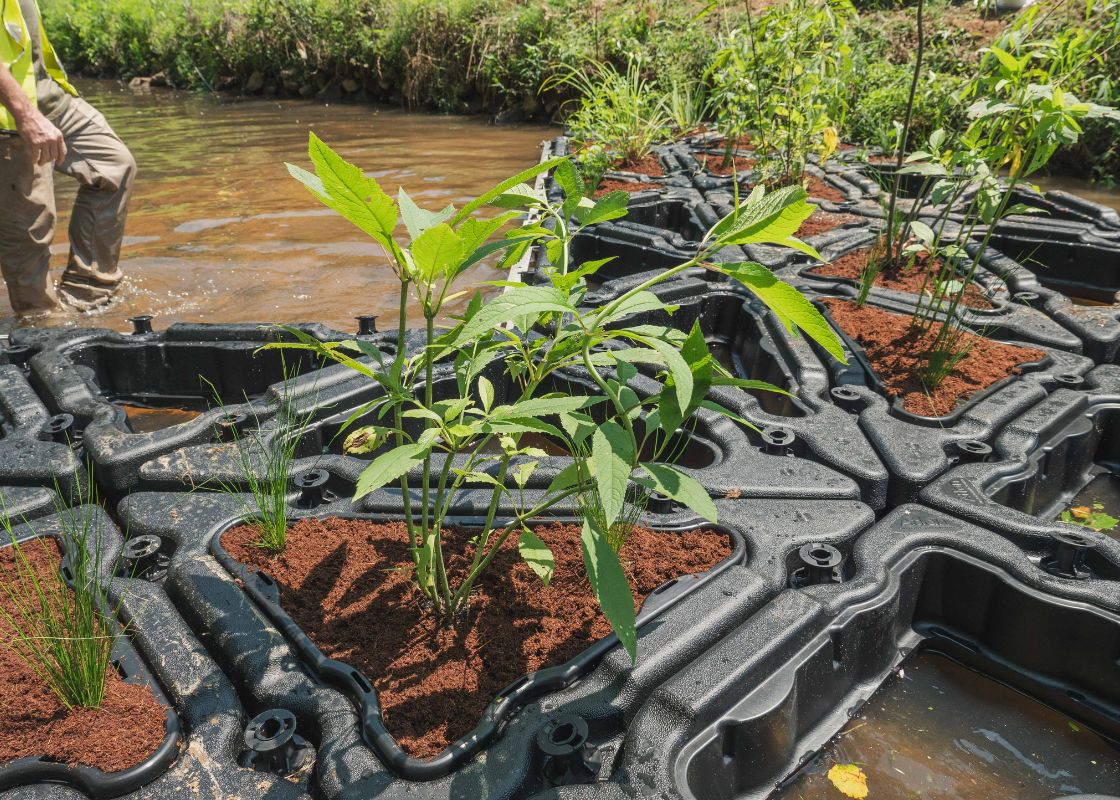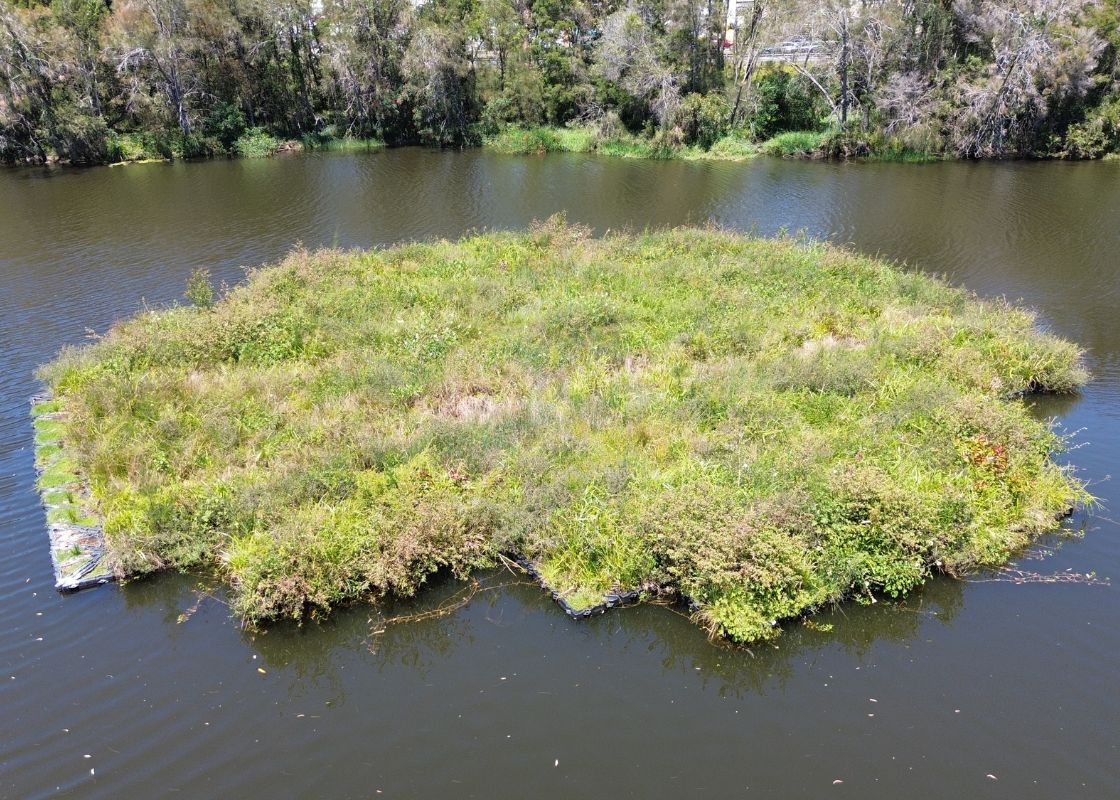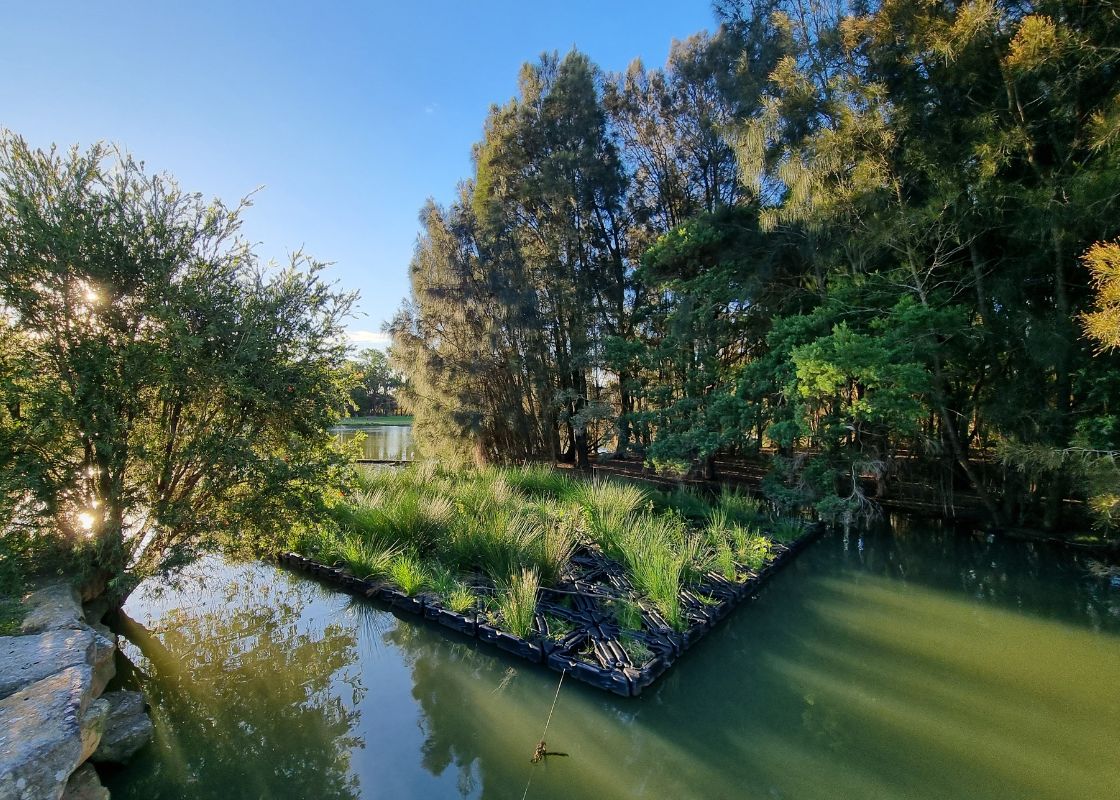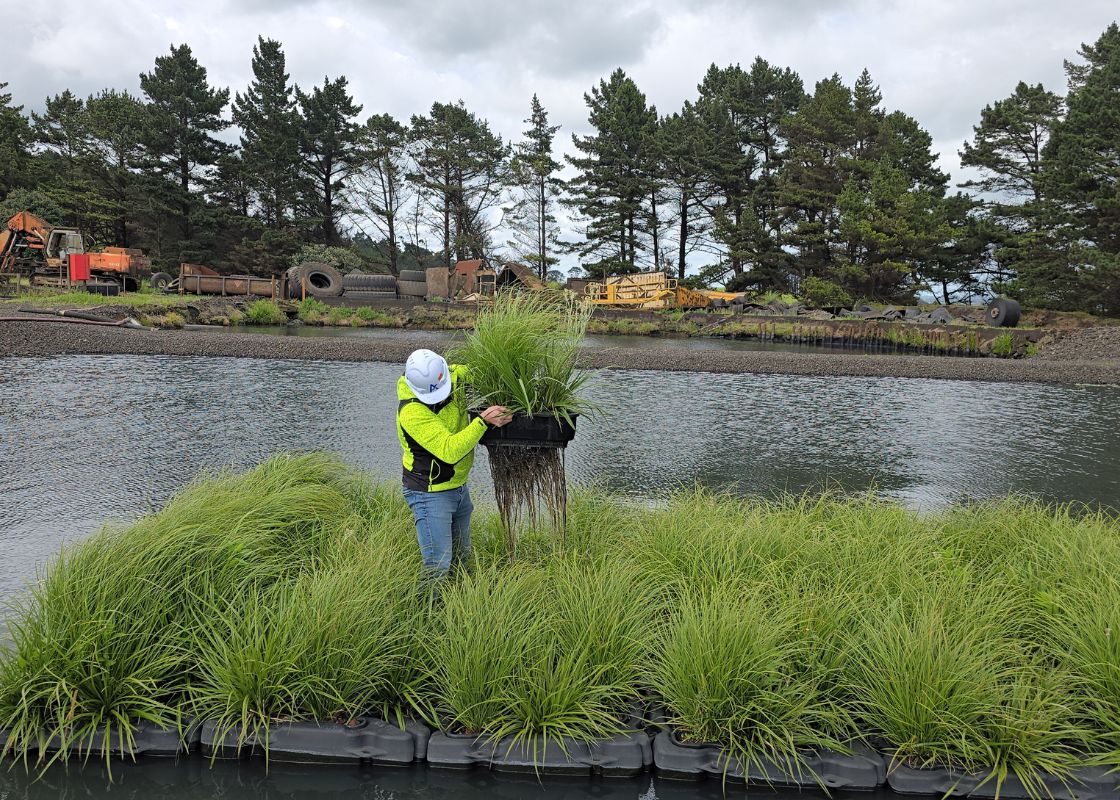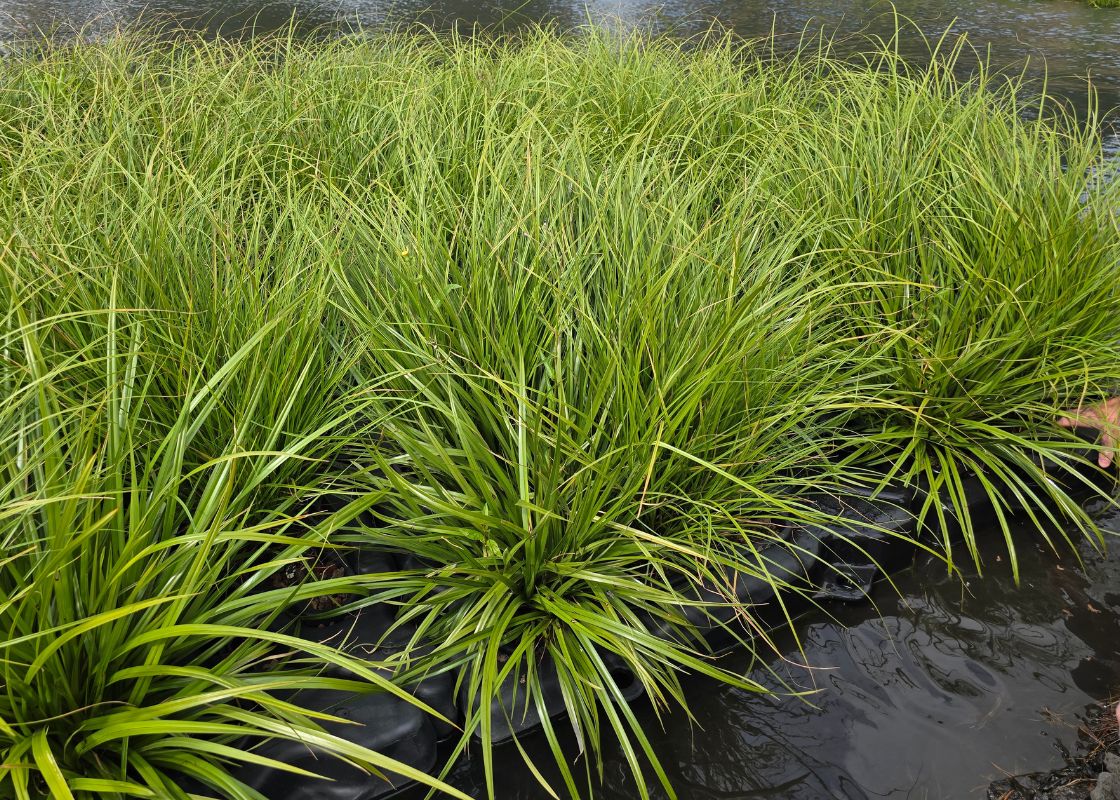Floating Treatment Wetlands are buoyant structures composed of floating modules, artificial platforms, or media that support the establishment of wetland vegetation at the water surface, allowing the creation of a floating wetland environment on top of a permanent waterbody.
Using biomimetic principles, these green stormwater assets imitate natural floating island ecosystems, improving water quality, raising land value, enhancing community aesthetics, conserving developable foreshore, and providing habitat for local flora and fauna.
Naturally occurring islands of floating material have been observed in large waterbodies internationally (eg. Lake Titicaca, South America) and locally (Tasmania, Australia).
Floating Treatment Wetlands are an engineered adaptation of these naturally occurring environments to improve water quality. They are known by various names, such as Floating Wetland Islands (FWI), Floating Islands (FIs), Floating Treatment Media (FTM), Constructed Floating Wetlands (CFW), and Floating Treatment Wetlands (FTWs).
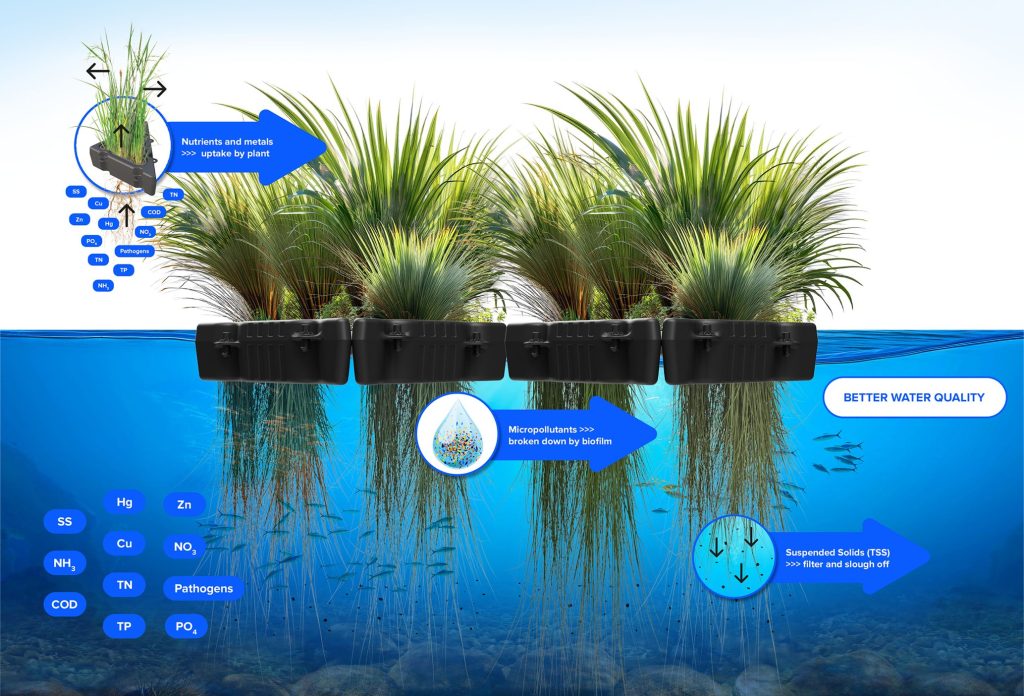
Floating Treatment Wetlands are naturalised stormwater assets that facilitate stormwater treatment by removing excess nutrients, sediments, and other pollutants through biochemical and microbial processes.
As the roots of plants in FTW systems grow, they extend into the water column, providing a large surface area network of root structures and biofilm that facilitate the treatment of stormwater to improve water quality. Applications for these systems include lakes, ponds, rivers, and sediment basins.
Compared to a conventional wetland, FTWs supercharge their capabilities to uptake nutrient loads by facilitating a much larger surface area for biofilm growth on the plant roots. In conventional wetlands, these grow on the foreshore – by growing plants directly on top of the water, their entire root system is submerged.
Consequently, floating treatment wetlands reduce the footprint requirements to meet water quality objectives by up to 60% compared to traditional constructed wetlands. This improves land usability for the developer, enhances land value, and provides more open water and foreshore.
Atlan Stormwater’s FTW utilises a combination of an HDPE floating module and an insert basket containing growing media for effective plant establishment. Key benefits of these systems include –
- Removing nutrients from catchment water flows.
- Reducing the land take compared with constructed wetlands and conventional treatment, such as bioretention.
- Reducing pollutant loads in water bodies that have high background concentrations of pollutants.
- Creating new habitats to act as a safe refuge for local wildlife, including nesting birds and amphibians, as well as providing a habitat below the water that can shelter fish and frogs from larger predators.
